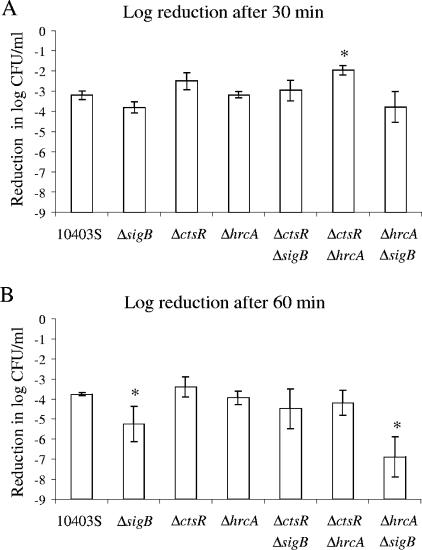FIG. 1.
Heat survival of the L. monocytogenes parent strain (10403S) and the ΔsigB, ΔctsR, ΔhrcA, ΔctsR ΔsigB, ΔctsR ΔhrcA, and ΔhrcA ΔsigB strains after (A) 30 min or (B) 60 min of exposure to 55°C. Strains were grown to early stationary phase before exposure to 55°C. Survival was expressed as the log reduction, which was calculated by subtracting the bacterial numbers (in log CFU/ml) before heat exposure from the bacterial numbers (in log CFU/ml) after heat exposure. The data shown represent the averages of the results of three independent experiments; error bars indicate standard deviations. Overall analysis of variance showed a significant effect of the factor “strain” on heat survival after both 30 and 60 min. Duncan's multiple-comparison procedure was used to determine whether heat survival differed between specific strains. An asterisk indicates a strain with a log reduction in the survival rate that differed significantly (P < 0.05) from the survival rate of the parent strain; in addition, the ΔctsR ΔhrcA strain also showed a significantly higher survival rate than the ΔhrcA ΔsigB and the ΔsigB strains after 30 min of heat stress. After 60 min, the survival rate of the ΔhrcA ΔsigB strain was significantly lower than those of all other strains, and the survival rate of the ΔctsR strain was significantly higher than that of the ΔctsR ΔsigB strain.

